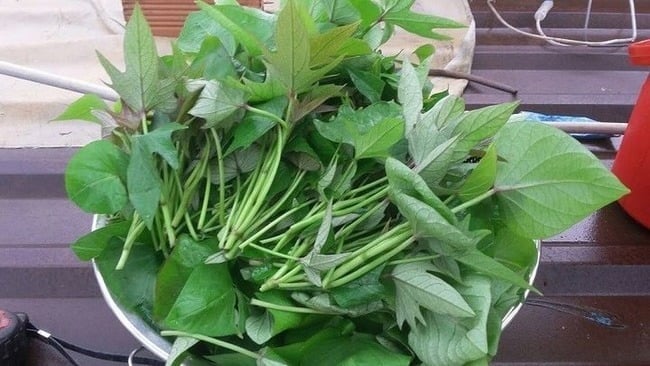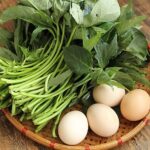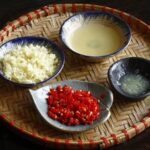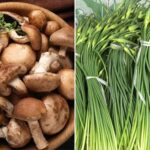Green vegetables are an essential part of a daily diet, offering a wealth of vitamins and minerals. However, the advancements in modern agriculture have led to excessive pesticide use, which poses a risk of contamination.
Fortunately, there are some vegetables that are easy to grow and have natural pest-resistant qualities, reducing the need for pesticides. Wise homemakers often opt for these eight types of vegetables as they are not only nutritious but also less likely to be sprayed with chemicals, ensuring the health and safety of their families.
**Sweet Potato Leaves**
Sweet potato leaves are versatile and can be prepared in various delicious ways, such as boiling, stir-frying with garlic, or adding to soups. Despite their humble appearance, these leaves are highly nutritious and are believed to have longevity-promoting properties.
Additionally, sweet potato plants have a unique feature: the white sap in their leaves helps repel insects, reducing the need for pesticides and providing peace of mind for consumers.

**Lotus Root**
Lotus root, which grows naturally in ponds and lakes, thrives with minimal human intervention. Due to its ability to absorb nutrients from the water and mud, lotus root is rarely bothered by pests and diseases. It is an excellent source of minerals, vitamin C, and dietary fiber, helping to cool the body, detoxify, and aid in weight loss.
**Chinese Chives**
Chinese chives, with their slender shape resembling green onions and a distinct garlic-like flavor, typically require no pesticides during cultivation.
This affordable and widely available vegetable is a favorite among home cooks and culinary enthusiasts alike, thanks to its delicious flavor and versatility in various dishes.

**Gourd Family Fruits**
Fruits from the gourd family, such as pumpkins, winter melons, and watermelons, are rarely bothered by pests, eliminating the need for pesticides. Additionally, their thick rinds provide a protective barrier against potential harm, offering reassurance to consumers.
**Chrysanthemum Greens**
Chrysanthemum greens, also known as shungiku, are particularly popular in autumn. Their natural fragrance repels insects, reducing the reliance on pesticides. These greens are packed with vitamins, amino acids, and calcium, offering stress relief, improved skin, and enhanced mental well-being.
**Stem Lettuce**
Stem lettuce has natural insect-repelling qualities due to the substances present in its leaves. It can be eaten raw, boiled, or stir-fried, grilled, providing essential nutrients. With its green or purple leaves and white tender stems, stem lettuce is a healthy and safe choice, free from the concerns of pesticide use.
**Water Caltrop**
Water caltrop, a vegetable that grows in water, has a thick protective shell, making it resistant to pests and diseases. Simply peel off the outer layer and use the tender inner portion for cooking. Water caltrop is cultivated without pesticides, ensuring absolute safety for consumers.
**Garlic**
In addition to the bulbs, garlic leaves are also commonly used in cooking. Rich in allicin, a natural insect repellent, garlic helps reduce the need for insecticides. Both the bulbs and leaves possess detoxifying, anti-inflammatory, and swelling-reducing properties, making them ideal for maintaining health during the autumn season.
“The Ultimate Superfood: Unlocking the Secrets of Vietnam’s Longevity Veggie”
Once considered a humble vegetable, sweet potato leaves are now being hailed as a beauty secret, offering skin-nourishing and weight-loss benefits that have everyone, especially women, taking notice. This unassuming green is a powerhouse of nutrients, and its ability to promote supple, glowing skin and support effective weight management is something worth exploring. It’s time to uncover the potential of this root vegetable and discover a new approach to beauty and wellness.
The Ultimate Guide to Blending a Mouth-watering Chili Garlic Sauce: Elevate Your Dipping Experience
If you’ve ever experienced the sinking feeling of garlic and chili sinking to the bottom, or ended up with a cloudy, overly spicy fish sauce, then the following tips will be a lifesaver. Learn these simple yet effective tricks to master the art of mixing fish sauce like a pro and elevate your culinary creations.






































